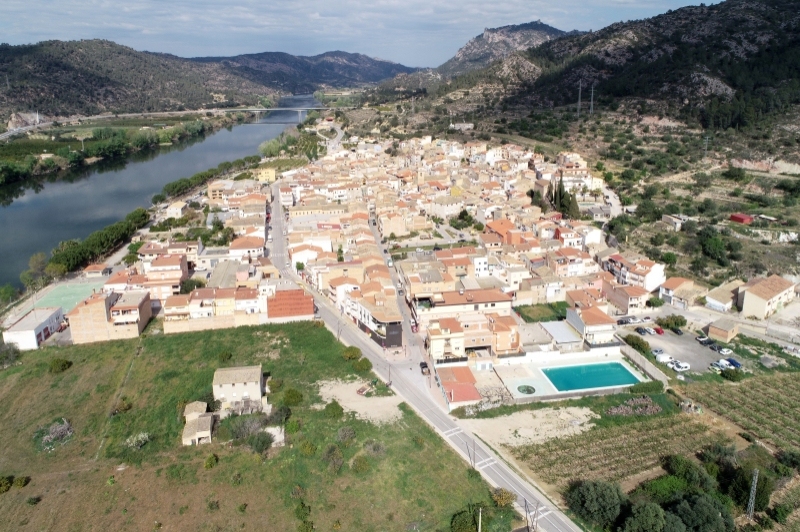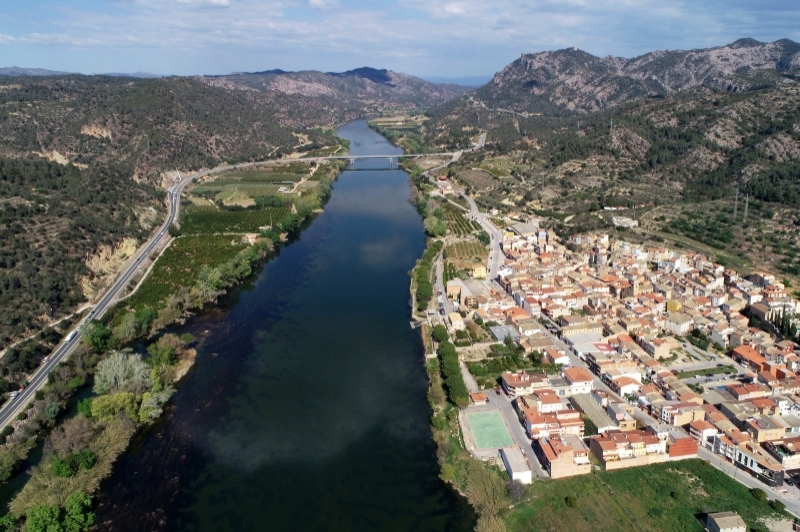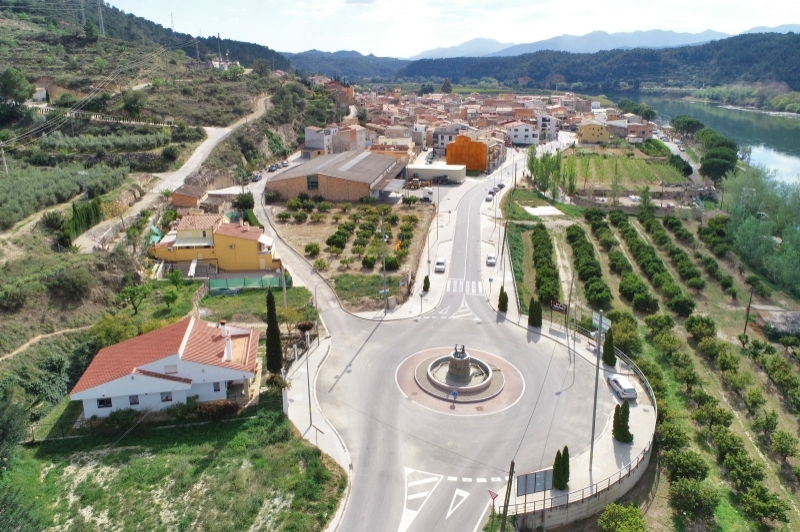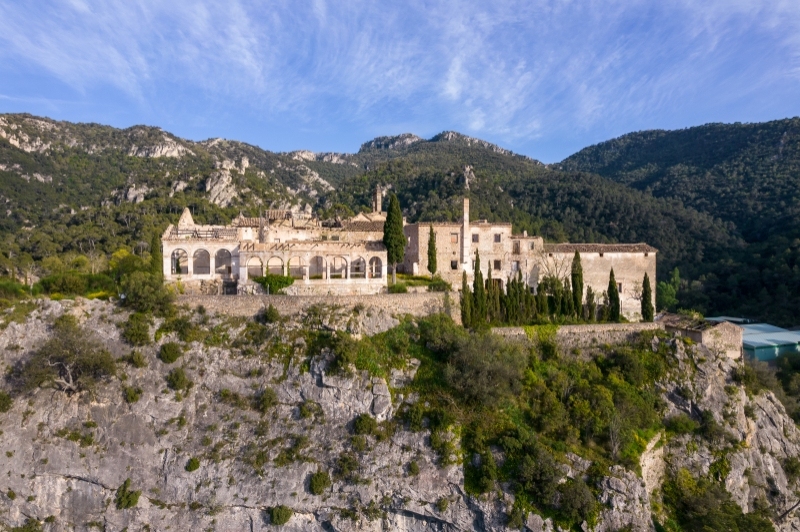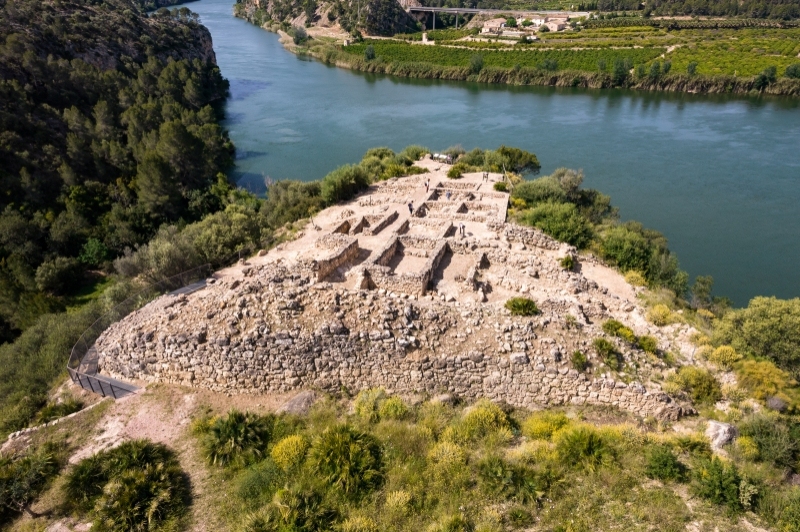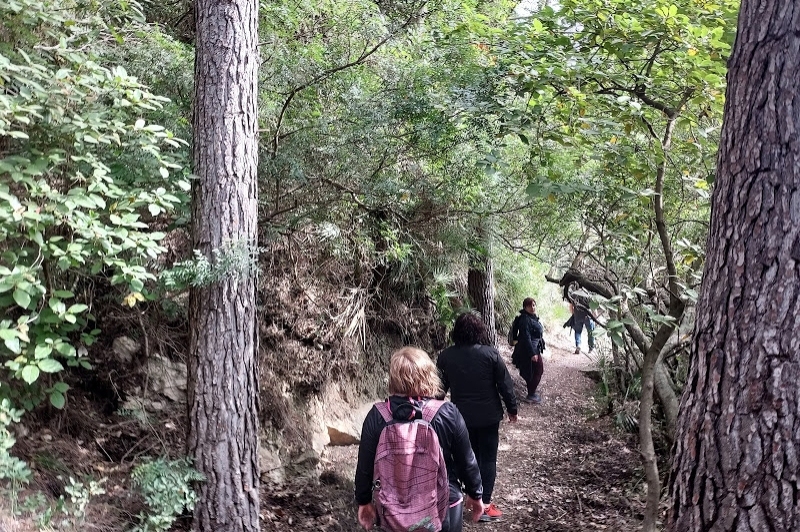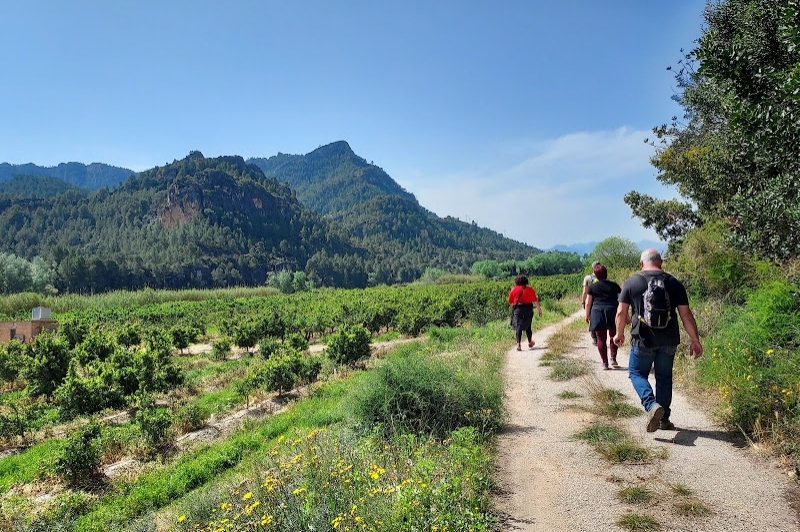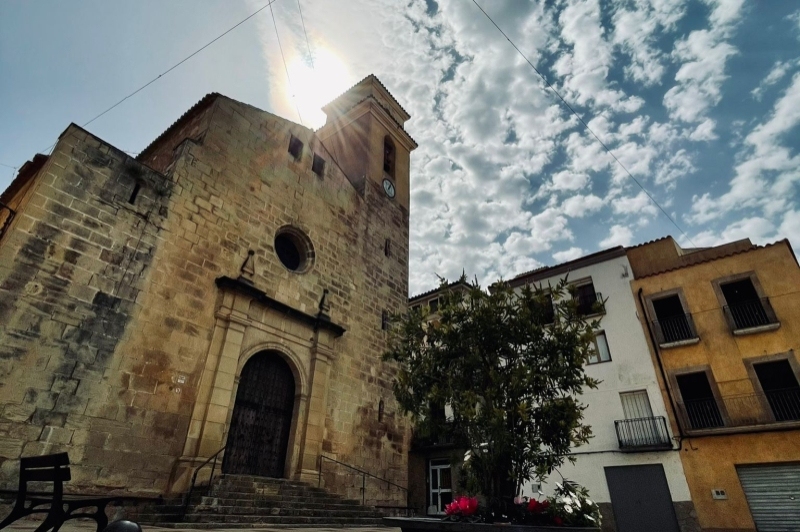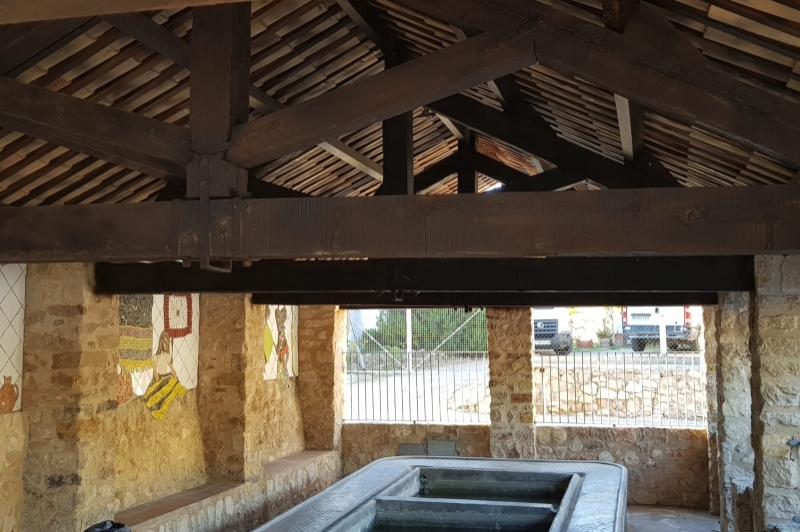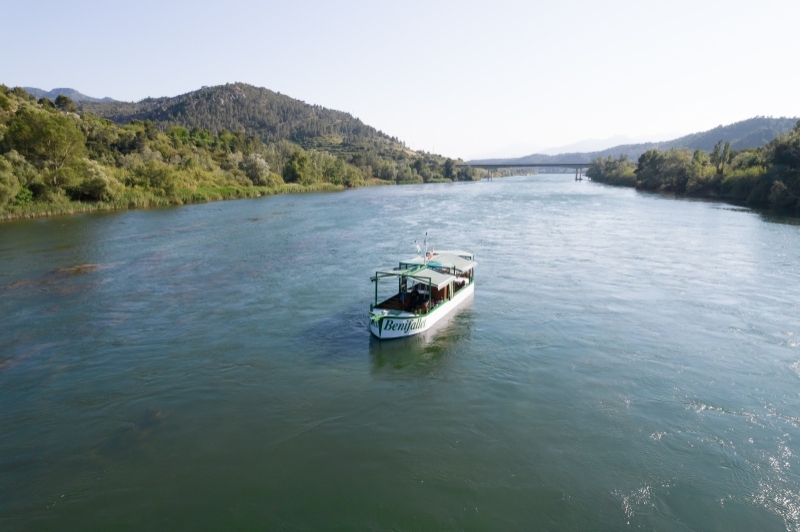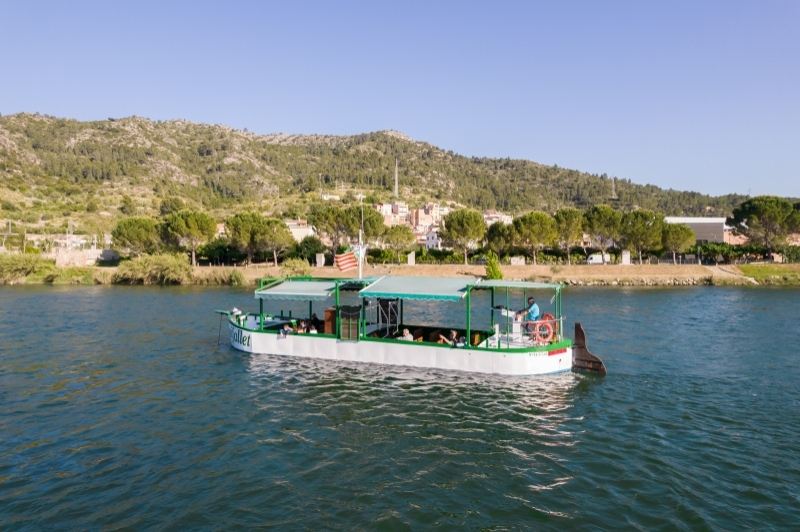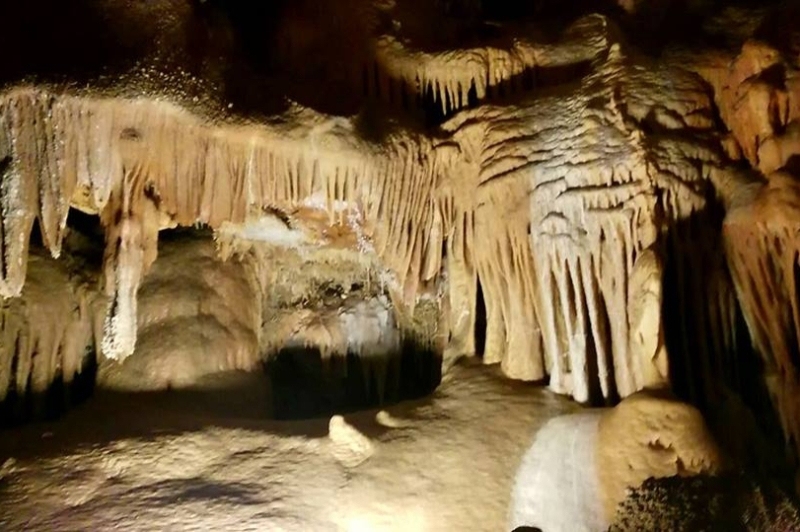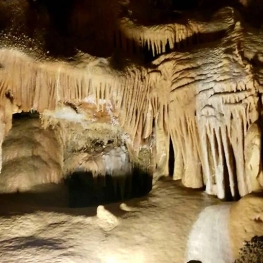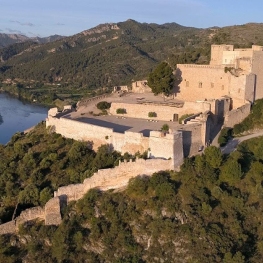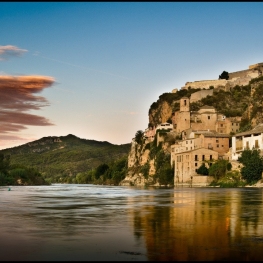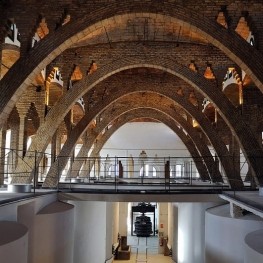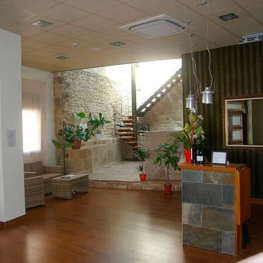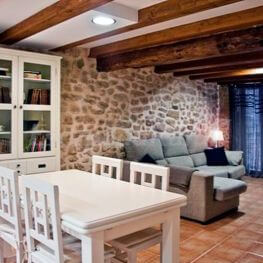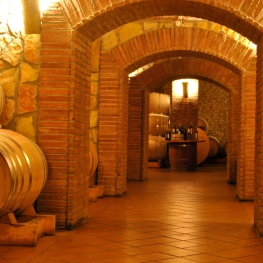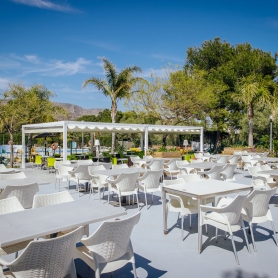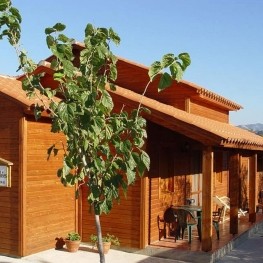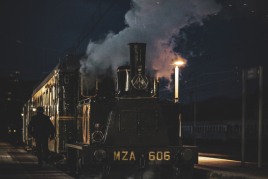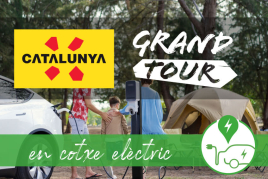Benifallet
Location
The municipality of Benifallet, with an area of 62.42 km², is located at the northernmost end of the Baix Ebre region, on the border with the Terra Alta and Ribera d'Ebre regions (on the border with Miravet is the Folletera Rock, historical dividing line of the term of Tortosa ). The term confronts Prat de Comte (W) and El Pinell de Brai (NW), municipalities of Terra Alta; with Miravet (N) and Rasquera (NE), from the Ribera d'Ebre, and with Tivenys (S), Paüls (W) and Xerta (SW), from the same Baix Ebre region.
History
The name of Benifallet appears for the first time in documents from 1153. The site already existed before the conquest of Tortosa by Ramon Berenguer IV. In 1208, King Peter the Catholic gave the castle to William IV of Cervera who, in 1215, gave it in turn to the knights of the Knights Templar. Subsequently, Benifallet returned to royal jurisdiction through its connection with the city of Tortosa. In 1207, Ramon de Montcada gave these places to Bernat Oliver Fuster with their lands and belongings, so that he could own them, exploit them and establish cultivators.
Connections
The first road that linked Benifallet with another town arrived in 1917, therefore, the town before that date communicated with the outside world through the llaguts. The llaguts were used to transport people, but also to market products and provide minimal services to the town. The Benifallet boat was used for years to connect Benifallet with the towns on the other side of the river. The boat stopped working in 1991, the year in which the Pont del Llaguter was inaugurated, an infrastructure that is part of the C-12 or Ebro Axis and connects the right bank of the Ebro River with Benifallet.
Agriculture, Livestock and Tourism
During the last decade, Benifallet has enjoyed strong tourist growth thanks to the exploitation of the Benifallet Caves and the navigability of the Ebro. On a gastronomic scale, it is worth highlighting the "pastisset de Benifallet" as a local product with recognition throughout the Catalan territory.
Benifallet, with less than a thousand inhabitants, is an agricultural town that in recent years has opted for agribusiness and tourism. In addition to traditional Mediterranean crops such as almond, olive and carob trees, a large number of fruit trees are grown. In irrigated areas, the main ones are peach and citrus trees with a diversity of varieties in both cases. During the months of May, June and July, peaches are sold. It is at the end of autumn and winter when commercial activity focuses on oranges and mandarins, highly appreciated in Europe. The fruits of Benifallet, with a temperate climate and favored by a relief that makes it more benign, are very early. In industrial activity, the food industries that handle fruits, those that bottle water and without forgetting those dedicated to the manufacture of cupcakes are important.
In the livestock sector we find poultry, rabbit, cattle and pig farms. The vegetation It is formed by the Degarric i Margalló coastal maquis; Aleppo pine and coastal scrub (rosemary, thyme, white rosemary, brush...) extend throughout the territory. The riverside vegetation is made up of poplars, elms, tamarinds and reeds, among others.
Climate
The temperate climate, typical of Mediterranean lands, has mild and stable temperatures, and little rainfall. It receives the notable influence of the relief that makes it more benign.
The climate has meant that in irrigated areas, the main fruits are peach trees and citrus trees with a diversity of varieties in both cases. During the months of May, June and July, peaches are sold. It is at the end of autumn and winter when commercial activity focuses on oranges and mandarins, highly appreciated in Europe.
The fruits of Benifallet, with a temperate climate favored by a relief that makes it more benign, are very early.
Traditions
Benifallet has several festivals, but we highlight the Fiesta de los Quintos celebrated in December in which, traditionally, the boys called to go to do military service collected funds. Today the tradition is maintained even though military service is no longer mandatory.
Nowadays, the town of Benifallet also celebrates with special attention the Clotxa Festival (January), the Anniversary of the Cuevas Maravillas (March), and the Major Festival (September). Other events also take place during the year but with less prominence.
Posts of Interest
The Wonder Caves
One of the best-known tourist options throughout the territory, made up of a set of spectacular formations of very varied structures such as: stalactites, stalagmites, columns, lava flows, flags, macaroni and the large number of eccentrics that seem to disobey the law of gravity.
Schedules by appointment
- Mornings: 10:15, 11:15, 12:15 and 13:15
- Afternoons: 16:15, 17:15, 18:15 and 19:15
Low season: January, February, March, November and December.
High season: April, May, June, July, August, September and October.
*Days and times vary depending on the season. Consult directly with the Benifallet Tourist Information Office by writing to: covesmeravelles@benifallet.cat or calling 977 46 23 34.
You can also call the Cuevas Maravillas phone number at 977 26 78 00.
Lute "Benifallet"
Given the rich landscape and tourism of the Ebro River, we have the “Benifallet” Llagut , where you can enjoy a fascinating trip touring the most spectacular places of this place with the flora and fauna that surrounds us.
Open from April to October
- Mornings: 11:00 and 12:30
- Afternoons: 16:30 and 18:00
*Days and times vary depending on the season. Consult directly with the Benifallet Tourist Information Office by writing to: covesmeravelles@benifallet.cat or by calling 977 46 23 34. You can also call the Cuevas Maravillas phone number at 977 267 800.
The Castellot of the Red Rock
The Castellot de la Roca Roja is one of the best preserved Iberian towns in Catalonia. The Iberian settlement is located on a rocky hill on the left bank of the Ebro approximately 40 meters above river level and about 50 meters above sea level.
Free entrance.
The Sierra de Cardó: Convent and Spa
The Cardó Desert became a Spa in the 19th century. It is located at the top of the Salt del Frare cliff.
Construction began in 1604 by three friars and a laborer. In 1606 the land was purchased and construction began on the convent where the community of the Discalced Carmelites was established. Due to the Carlist War and, later, the confiscation of Mendizábal, the Carmelites had to abandon Cardó.
In the 19th century, some businessmen from Tortosa decided to build a spa-restaurant along with the group of buildings that had been left unused for two centuries. During that century the Spa enjoyed great fame, until the Civil War arrived.
In 1974 it was bought to start a bottling plant that went through different owners until 2007 when the activity definitively ceased.
Free entrance.
The Greenway
The Vía Verde is a tourist route that runs along the old Val de Zafán railway line that linked Aragon with Catalonia and which has been converted into a cycling and hiking itinerary. The 22 km Baix Ebre route runs through Tortosa, Roquetes, Jesús ( Tortosa ), Aldover, Xerta and Benifallet; where one of the most emblematic stations of the entire Greenway is located.
Free entrance.
Nearby routes
See all routes »What to do
Coves de Benifallet
BenifalletOne of the best-known tourist options throughout the territory, made up of…
Castell de Miravet
Miravet (a 9.3 Km)The Miravet Medieval Castle is a remarkable example of the architecture of…
Tarvitur Visites Guiades
Miravet (a 9.7 Km)Tarvitur invites you to discover cultural areas of stories and legends linked…
Cooperativa de Gandesa
Gandesa (a 11 Km)You can visit the cooperative as designed by Cesar Martinell, with the…
Where to eat
Restaurant Hotel Nou Moderno
Vilalba dels Arcs (a 18.5 Km)Hotel restaurant to enjoy the tranquility of Terra Alta and try the…
Where to sleep
Ca la Leonor
Bot (a 11.9 Km)Rural house from 1880, renovated in 2012, preserving the original wooden beams…
Enoturisme Celler Piñol
Batea (a 21.8 Km)Celler Piñol is a family winery located in Batea, dedicated to producing…
Càmping Alannia Costa Dorada
Vandellòs i l'Hospitalet de l'Infant (a 28.8 Km)Alannia Costa Dorada is located in an environment with direct access to…
Apartaments Les Valletes
Arnes (a 22.4 Km)Les Valletes Apartments are located in Arnes, a charming municipality in the…
Events
Experiences
Come and discover the true Spirit of Christmas!
Museu del Ferrocarril de Móra la Nova (Móra la Nova) (a 18.5 Km)


